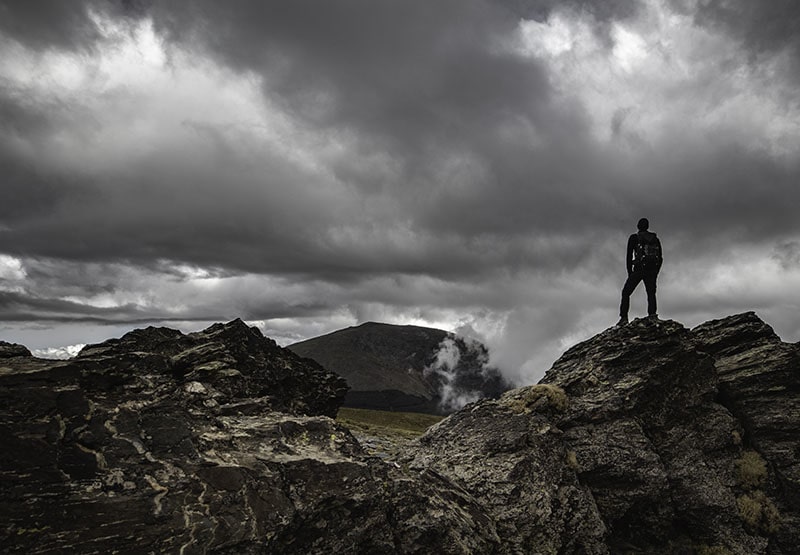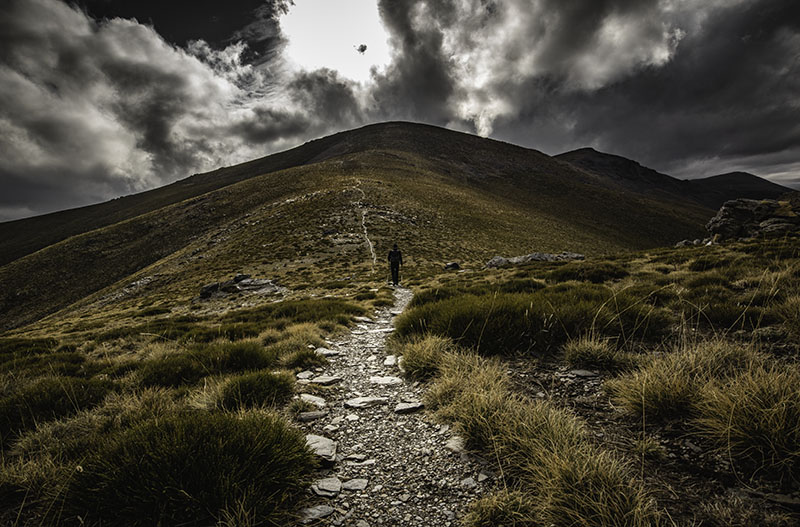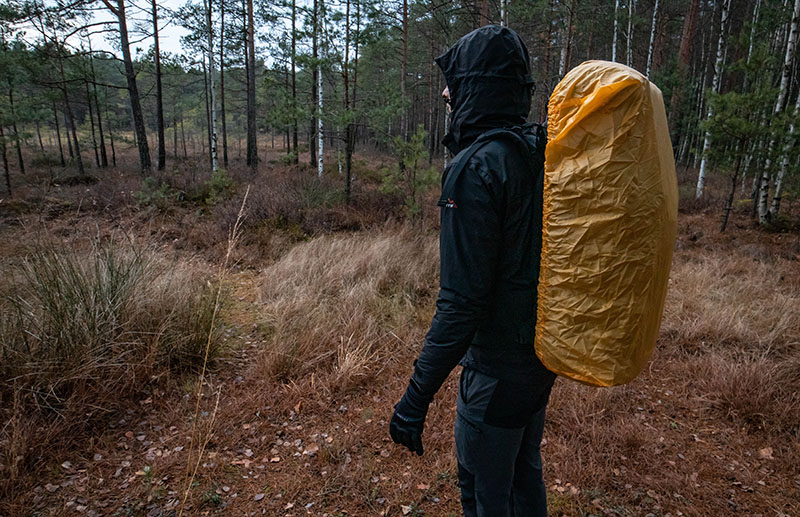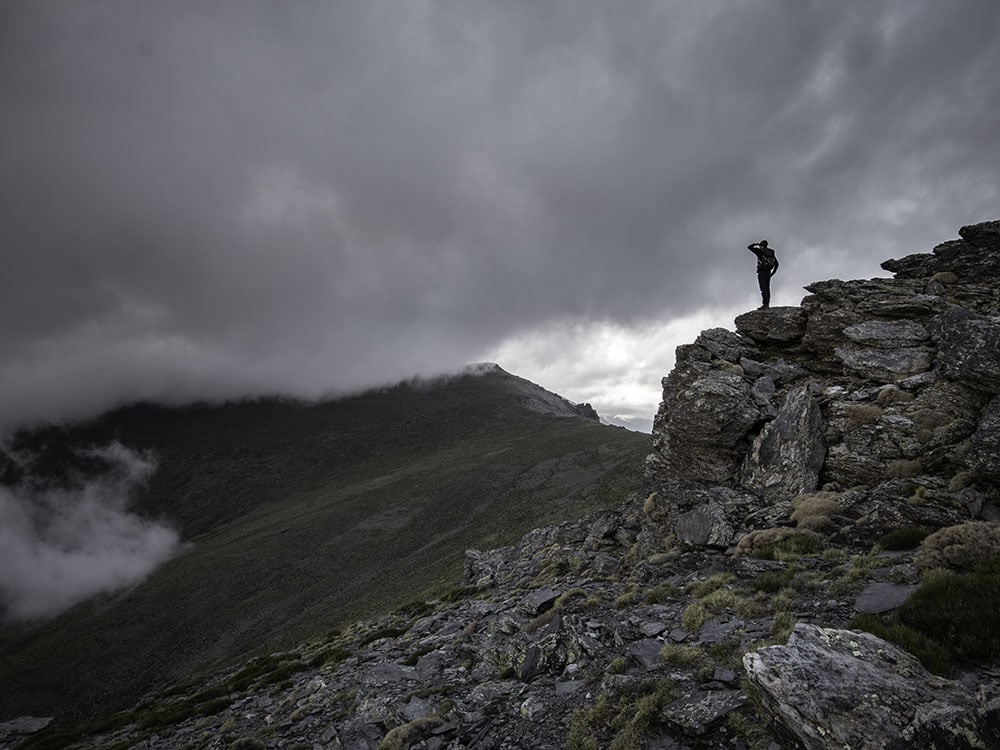Rain shouldn’t be the thing that cancels your plans to go hiking. If you know what you’re doing, hiking after rain shouldn’t be dangerous or complicated. But there are certain things to be aware of.
Is Hiking After Rain Safe?
It’s safe to go out hiking after rain in wooded, non-mountainous areas if you take certain precautions. The main dangers that you’ll encounter are muddy and slippery trails. This could cause you to slip, even when wearing boots that offer proper traction and using trekking poles. You could also get hypothermia if it starts raining again and your gear gets wet. But other than that, it’s completely safe.
If you’re planning on hiking in the flatlands or in the desert, then you should wait 1-2 hours after it stops raining. In these areas, the water can accumulate in the lower areas and cause sudden flash floods. After 1-2 hours, the risk of flash floods is minimal, unless it continues raining in another area nearby. Some areas around large rivers are also susceptible to flash floods.
When hiking in the mountains, you can resume your hike immediately, but there are additional things to look out for. Slipping could mean falling for tens or hundreds of meters, so you have to be extra careful. Rivers could overflow or if you’re hiking in early spring, the rain could trigger an avalanche. There could also be lightning and even landslides. In a few words, there are a lot of things that can go wrong when hiking after rain in the mountains. So you have to learn what are the main dangers and how to overcome them.
Dangers of Hiking After Rain and How to Overcome Them

1. Overflowing Rivers and Creeks
Some trails require river crossings and if they’re located near mountains, they can overflow very quickly. You have to be wary of this because you might get trapped for several hours or even days on the mountain if the river crossing becomes too dangerous. If the trail goes along a wash in the mountains, be on the lookout for any potential rain clouds further up the mountain. That’s because a completely dry wash can turn into a fast-flowing river very quickly. If the river crossing looks too dangerous, the best thing that you can do is wait until it calms down.
Instead of jumping between rocks, don’t be afraid to get your feet wet. It’s a good idea to keep your boots on and change into shorts while doing the river crossing. This will allow you to have much better traction and reduces the chances of slipping. After finishing the crossing, you’ll need spare shoes, socks, and pants. If you slip, remember to swim downstream with your feet first on your back.
2. Landslides
If it’s been raining for a while, usually a few days or weeks, then some trails become very dangerous due to potential landslides. These can be very devastating because usually, they happen out of nowhere, even if it hasn’t been raining for a few days. But the thing about landslides is that they usually happen in the same location. So make sure to do some research about the trail that you’ll be hiking, and double-check if there’s any risk for landslides. Trails where this happens often get closed when there’s a large risk of a landslide, so watch out for any notices.
3. Avalanches
In early spring, rain can trigger avalanches. Most trails that are susceptible to avalanches get closed when there’s a high risk. So the best thing that you can do is to watch out for any notices and cancel your trip if there are.
4. Mud, Wet Rocks, and Slippery Ground
The ground can stay slippery for days after raining if it’s cold and the area gets a lot of shade. To avoid slipping on roots, rocks, and mud, you need a pair of good hiking shoes/boots and trekking poles. You can’t go out hiking in regular running shoes – your footwear needs to have good traction. Trekking poles will help with keeping balance and keep you from falling in case you slip.
5. Lightning
When hiking after rain, lightning can still happen even if it looks like the storm has already passed. Generally though, lightning should only be of your concern if you’re in a high, exposed area without any trees. That’s because lighting usually strikes at the highest point. If you’re on an exposed ridge, it could strike you.
So watch out for any thunder and in case it starts, run down to the nearest natural or manmade shelter. Don’t hide under tall trees and rocks in the middle of an open field because lightning can strike there. Instead, look for a bunch of trees, rocks, and if there aren’t any, run to the lowest point where you can.
Also, watch out for the hair on your hands. If it starts raising up on its own, lightning can happen at any moment. In that case, take off your backpack, and if you’re in a group, spread out with at least 50 meters of distance between each one of you. Croutch down with only your feet touching the ground, put your arms on your head, and let your knees touch your elbows. This will create a shorter path for the lightning to go through in case it strikes, in a way where it avoids your organs and increases your chances of survival.
6. Sudden Weather Changes

Don’t trust the weather conditions in mountainous areas, because the forecast is often completely wrong. When you begin hiking, keep an eye out for nearby shelters in case the rain comes back and your need to find a place to hide out.
If it has just rained in the mountains and the sky has turned blue, there’s a very low chance that it will continue raining. That’s because thunderstorms usually happen only once every day in the mountains, at around 11:00 – 16:00 (although it depends on the area).
7. Flash Floods
If you’re out in a desert that’s near a mountain range, or you’re at the bottom of a plain, chances are that sudden, large amounts of rain could start a flash flood. So if you’re hiking in an area that is known for flash flooding, watch out for the weather forecast, and know the fastest way out if you become trapped.
8. Hypothermia
Hypothermia is the most common danger of hiking in rain, and it can be fatal. Essentially, you become too cold from being wet over an extended period of time, and your body can’t heat up itself anymore. In this case, you should call for rescue immediately.
When hiking in the rain, you need to achieve two things with your gear. First, you need to stay dry and warm while you’re hiking. And second, you need to make sure that your sleeping gear stays dry and bring spare dry clothes just in case. You can achieve both of these tasks by getting good-quality waterproof gear.
Also, make sure that your first aid kit comes with an emergency blanket, which can be very handy if all of your gear gets wet and you need something to keep warm.
Warning: Some Trails Might Get Damaged From Walking in Wet Conditions
When too many people go hiking after rain on trails that are mostly made of clay and mud, too much erosion happens. The trail widens from people walking around mud puddles and in some parts, the trail develops deep ruts. Some of these trails get closed in wet conditions for this exact reason, so keep an eye out for any trail notices.
That’s why it’s a more responsible idea to hike other trails instead. Trails that are mostly made of rocks are fine to hike in wet conditions because they won’t erode.
It’s Safe to Hike in the Rain if You Know What You’re Doing
If you have waterproof gear, it’s safe to continue hiking during the rain in wooded, low-altitude areas. You should only stop if you start hearing thunder or if the wind speed picks up to a point where it becomes too dangerous to continue.
You should avoid hiking in the rain when hiking in very flat areas, which are at risk of flash flooding.
Hiking in the mountains during light rain is possible. But in heavy storms, it can become too dangerous to continue, due to the risk of slipping and falling from fatal heights, trails turning into small rivers, and small rockslides. You should only continue hiking in the mountains if it’s raining very lightly, and even then you should be very cautious not to get hypothermia.
How to Choose Gear for Hiking in The Rain (or After Rain)

- Use synthetics over down. For the insulation in your jacket and sleeping bag, always choose synthetic over down if you know it will be raining. Although down is lighter, it loses all of its insulation properties once it gets wet. Synthetic insulation will keep you warm even when it’s wet.
- Avoid cotton. For your clothing, always choose synthetics or wool over cotton. It soaks up a lot of water when wet, gets much heavier, and loses its insulating properties.
- Keep your sleeping bag, sleeping mat, and tent dry. To keep your most important gear dry, you can use waterproof dry sacks. Another alternative is to use Ziploc bags and large trash bags, but you’ll need to replace them regularly.
- To keep your feet warm, use plastic bags. If you’ll be hiking in the rain all day, you can put plastic bags between your socks and your shoe. Your socks will get damp anyway due to the lack of breathability, but at least they’ll stay warm. A good option is to use empty bread bags because they’re just in the right size.
- Get a rain cover for your backpack. Theoretically, if you use a waterproof pack liner, you don’t need a rain cover. But if you want to add an extra layer of security, get a rain cover for your backpack. They aren’t fully waterproof, but they keep most of the water out.
- Get a waterproof rain jacket. If you have the budget, invest in a good, fully waterproof rain jacket. If not, bring a cheap single-use plastic raincoat, which should do just fine.
- Get waterproof pants. If it isn’t too cold, you could skip bringing waterproof pants and shoes, and just get a waterproof rain jacket. But if it’s too cold, you should get waterproof pants to avoid getting hypothermia.
- Make sure your shoes are waterproof. If it’s warm outside and it won’t be raining all the time, it’s a better idea to get breathable shoes that dry quickly. But in the autumn and winter, you should get waterproof shoes, because your feet get cold the quickest and also take the longest to heat back up. Warm, insulated, waterproof boots are a must if you’re hiking in just above or below-freezing temperatures.
- Invest in gaiters. When hiking after large amounts of rain, when the grass is still wet, gaiters are a lifesaver. They keep your upper shoes and lower trousers dry while walking in wet grass. They’re also great if you’re hiking in wet areas where there could be snakes, as they can’t bite through the thick gaiter’s fabric.
- Hike with synthetic gloves. Keeping your fingers warm is very important for keeping your body temperature nice and warm. Synthetic gloves will keep their insulation properties when wet, thus keeping your fingers nice and toasty.
- Bring dry clothes. You should also bring some dry clothing to change into at the end of the day. A thermal top, thermal pants, and a pair of dry wool socks are more than enough to keep you nice and warm at night.
- Invest in trekking poles. They’ll help you keep your balance and allow you to take wider and longer steps when avoiding mud and puddles.
- Remember to bring blister supplies. If your feet get wet when hiking after rain, you might get blisters, as they form much more easily when your feet and socks are wet. So remember to bring some Leukotape to treat all the new blisters.
If You Know What You’re Doing, Hiking in the Rain Is Fun
Hiking in the rain is a rewarding experience but only if you’re prepared for the rain and you’re avoiding dangerous routes. Breathing in the fresh air right after the rain stops, hearing the sounds of thunder, and sheltering underneath a tree is something that you’ll look back on with a smile on your face. Especially if you know that you’ll still be warm and dry even after the rain stops. So my advice would be to not be afraid of the rain and instead prepare and plan for it.
